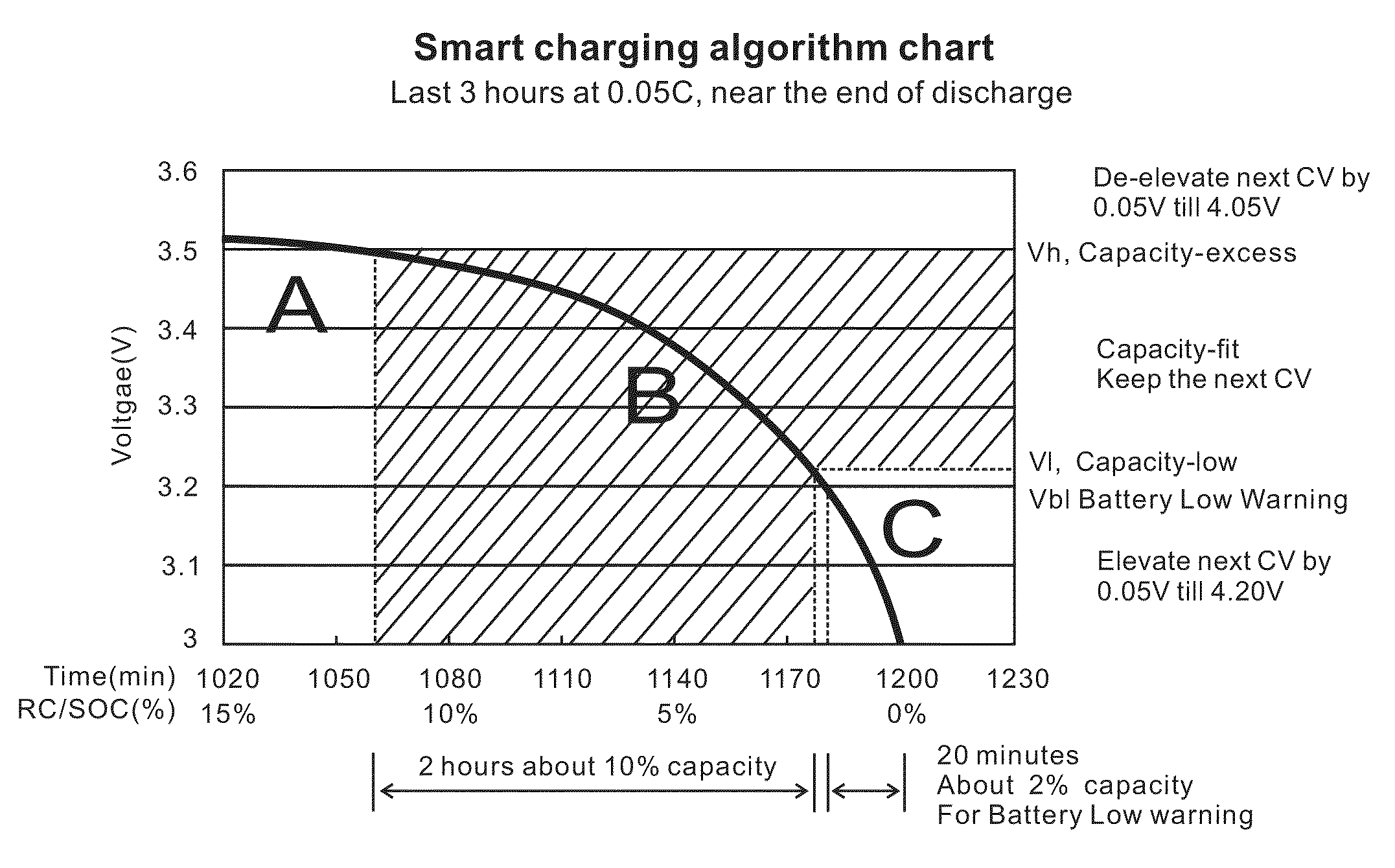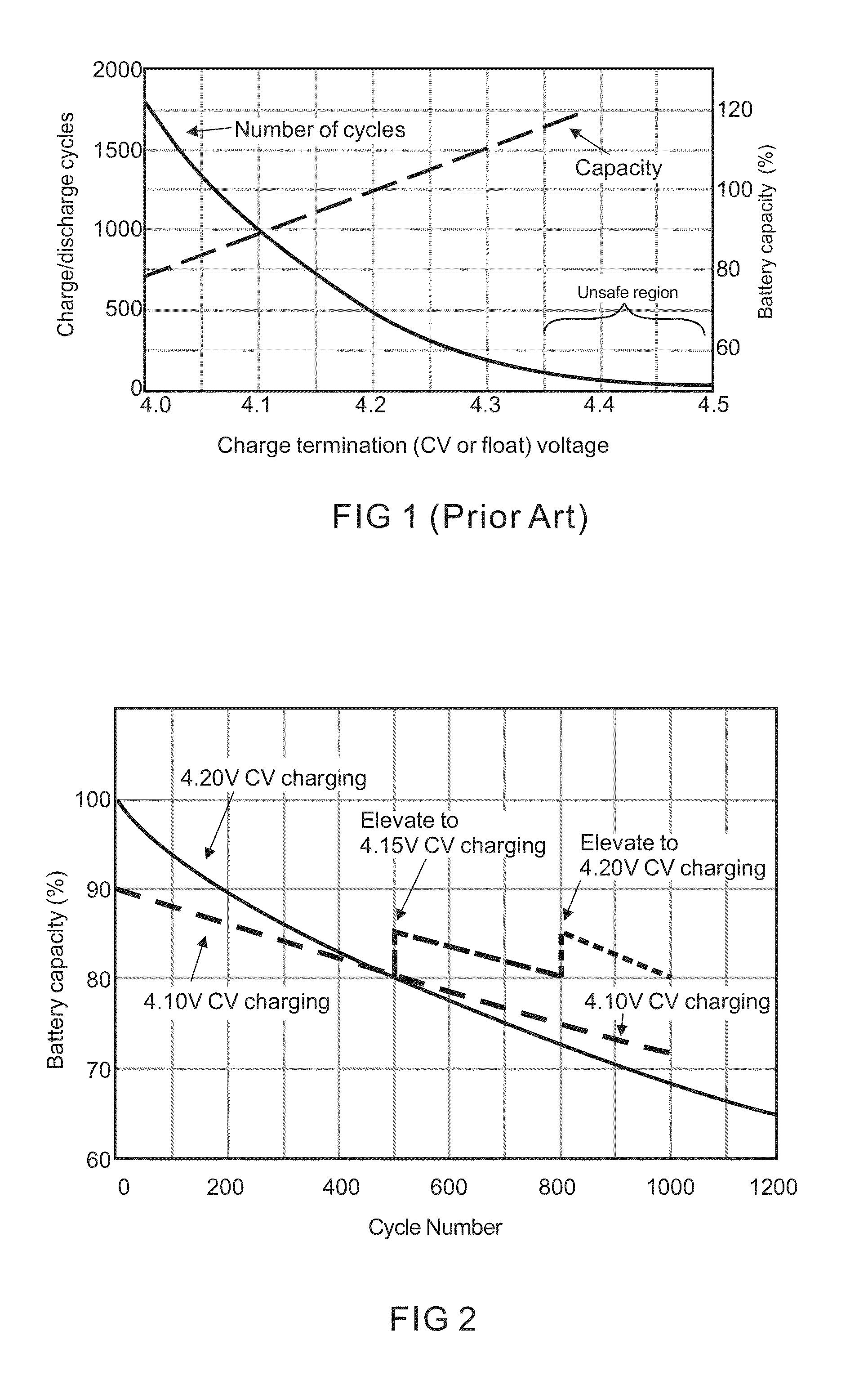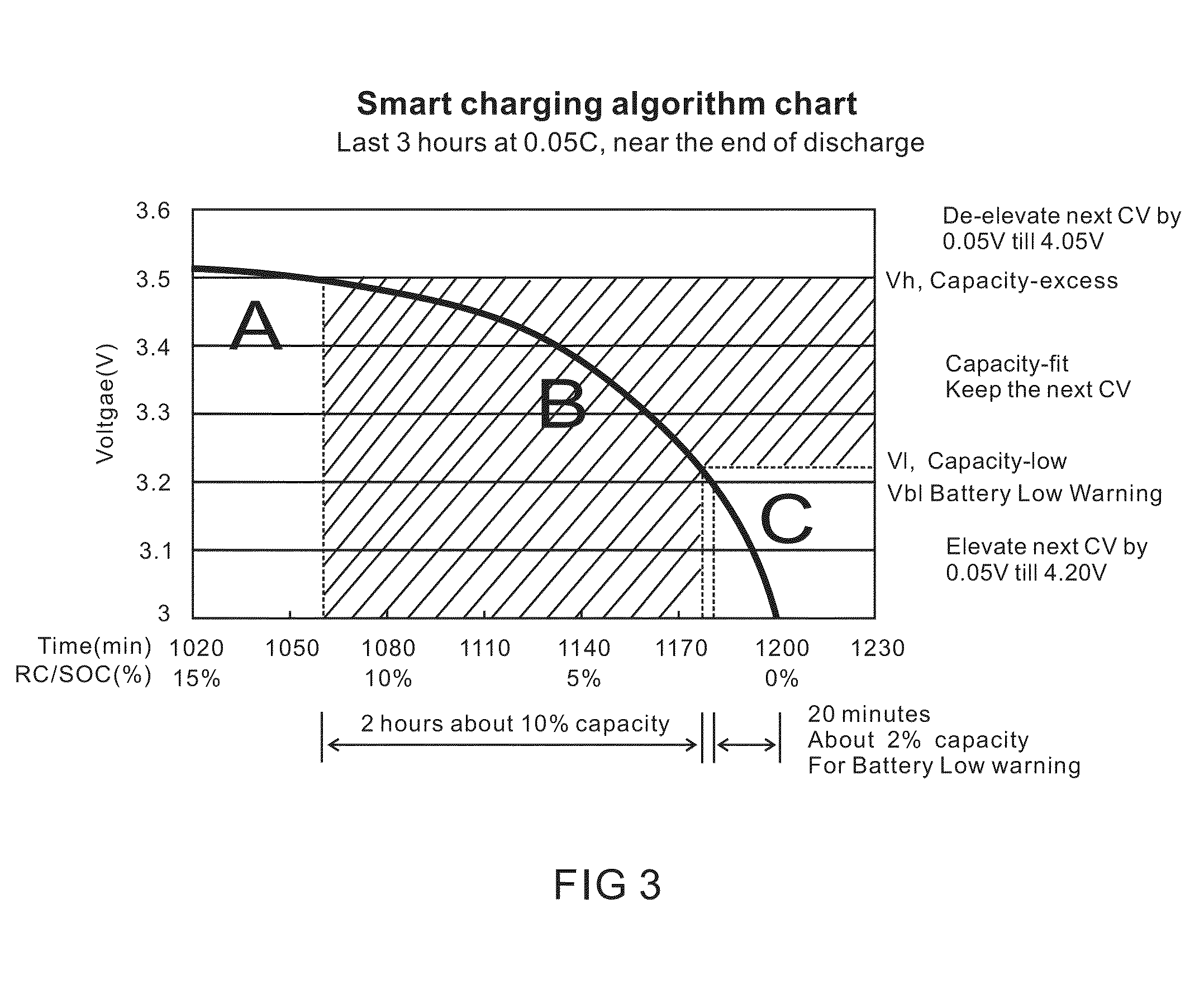Smart charging algorithm of lithium ion battery
a lithium ion battery and intelligent charging technology, applied in circuit monitoring/indication, electrical generators, transportation and packaging, etc., can solve the problems of battery manufacturers and great technical challenges, and the battery cycle life is usually diminished, so as to reduce the stress on the battery, the battery is less stressed, and the energy consumption is not high.
Inactive Publication Date: 2014-10-30
ZHUHAI ZHI LI BATTERY
View PDF4 Cites 22 Cited by
- Summary
- Abstract
- Description
- Claims
- Application Information
AI Technical Summary
Benefits of technology
The patent is about a hearing aid system that has a long battery life. This is achieved by setting a higher voltage for the battery, allowing it to charge to a higher capacity while still providing enough energy for the user's needs. By measuring the battery's capacity and adjusting the charging voltage accordingly, the battery can maintain its performance for several thousand cycles. This approach also reduces stress on the battery, resulting in a longer battery life.
Problems solved by technology
So the battery cycle life is usually diminished on such higher charging voltage.
Such high demand on cycle life gives the battery manufacturers great technical challenges.
Method used
the structure of the environmentally friendly knitted fabric provided by the present invention; figure 2 Flow chart of the yarn wrapping machine for environmentally friendly knitted fabrics and storage devices; image 3 Is the parameter map of the yarn covering machine
View moreImage
Smart Image Click on the blue labels to locate them in the text.
Smart ImageViewing Examples
Examples
Experimental program
Comparison scheme
Effect test
example
[0045]Li-ion button cell Z23 batteries at diameter 7.8 mm height 5.3 mm were made at 23 mAh 3.7V, and by counted stepped charging at 0.5C CC-CV charging and 0.5C discharging, CV charging starting from 4.05V and then elevated respectively to 4.10V / 4.15V / 4.20V when 80% of FC is reached, cycle life is found to be at 1500+cycles above 18 mAh, compared with 800+ cycles of fixed 4.2V charging to the same capacity.
the structure of the environmentally friendly knitted fabric provided by the present invention; figure 2 Flow chart of the yarn wrapping machine for environmentally friendly knitted fabrics and storage devices; image 3 Is the parameter map of the yarn covering machine
Login to View More PUM
 Login to View More
Login to View More Abstract
A charging algorithm of lithium ion battery comprises at least one final stage wherein a maximum charging voltage is reached and the charging stops at said voltage. The state of charge or remaining capacity at the end of last discharging is measured and recorded, and said maximum charging voltage of last charging is also recorded. The maximum charging voltage of a new charging will be determined by said state of charge of last discharging and said maximum charging voltage of last charging. This novel charging algorithm provides longest possible cycle life for the daily used electronic devices while fully utilizes the battery capacity, and also fits the individual user's battery capacity consumption.
Description
FIELD OF INVENTION[0001]This invention relates to the charging algorithm or method for rechargeable lithium-ion battery, to have it has longest possible cycle life. More particularly, such charging algorithm is applied to those daily used and daily charged products, such as a rechargeable hearing aid system, as well as other products like mobile phones, wireless earphones, or other body ware small electronic devices.BACKGROUND OF THE INVENTION[0002]Rechargeable lithium ion batteries have been a great success in last two decades for powering consumer products as well as electric vehicles or power grid storage. The cycle life can be from 100 cycles for extra-high power model helicopter batteries to 10000 cycles for power grid storage. For common daily used consumer products like cell phones and earphones, such batteries usually have cycle life of 300 to 500 cycles, by well-known CC-CV charging (Constant-current, constant-voltage).[0003]The cycle life of Li-ion batteries is effected by...
Claims
the structure of the environmentally friendly knitted fabric provided by the present invention; figure 2 Flow chart of the yarn wrapping machine for environmentally friendly knitted fabrics and storage devices; image 3 Is the parameter map of the yarn covering machine
Login to View More Application Information
Patent Timeline
 Login to View More
Login to View More Patent Type & Authority Applications(United States)
IPC IPC(8): H02J7/00
CPCH02J7/007H01M10/446H01M10/448H02J7/0071H02J7/00712Y02E60/10H02J7/0048
Inventor WANG, FANGSUN, FAJIONG
Owner ZHUHAI ZHI LI BATTERY
Features
- R&D
- Intellectual Property
- Life Sciences
- Materials
- Tech Scout
Why Patsnap Eureka
- Unparalleled Data Quality
- Higher Quality Content
- 60% Fewer Hallucinations
Social media
Patsnap Eureka Blog
Learn More Browse by: Latest US Patents, China's latest patents, Technical Efficacy Thesaurus, Application Domain, Technology Topic, Popular Technical Reports.
© 2025 PatSnap. All rights reserved.Legal|Privacy policy|Modern Slavery Act Transparency Statement|Sitemap|About US| Contact US: help@patsnap.com



